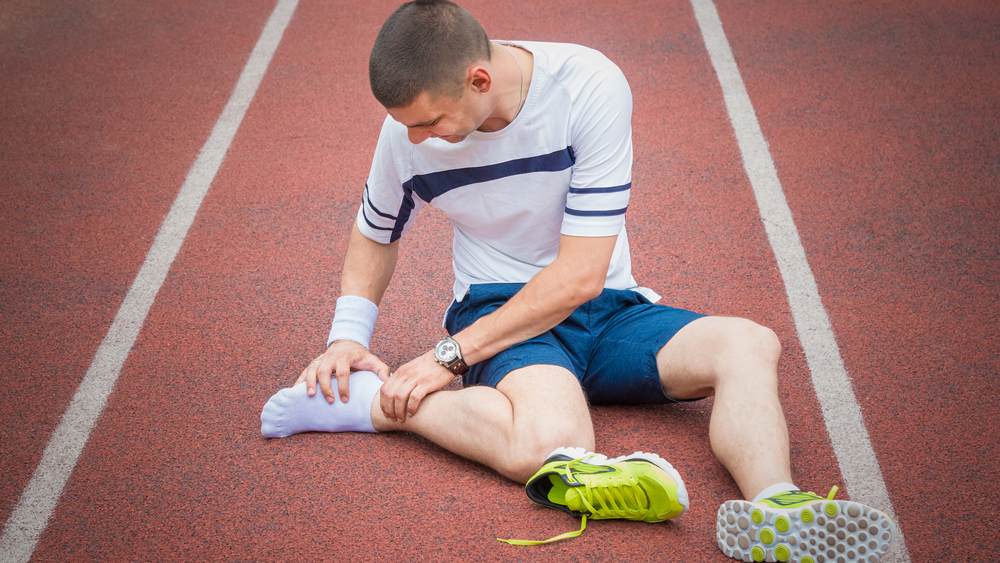How To Not Let Injury Derail Your Marathon Training
Almost half of Brits preparing for a big sporting event get injured in the build-up

If you’ve managed to nab a spot in the London Marathon through the ballot system then congratulations are in order – the odds were not in your favour. A huge 386,050 people entered the draw for the 2018 race and some people can go years without being lucky enough to get a place.
Once the celebrations die down, however, it’s time to think about the event itself, and the training you’ll need to do to cover 42.2km on two feet.
For almost all marathon runners, training for the event involves a massive increase in the amount of running they do each week. Often, let’s be honest, from zero running. This means the risk of injury is considerable if you’re not training smart, and judging by new stats from Bupa Health Clinics, a lot of people are not training smart.
According to the research 43% of Brits who train for a big sporting event like a marathon pick up an injury during the process. That’s bad enough, but it’s also alarming that 22% of those who do pick up an injury just carry on training through the pain without consulting an expert about it. That’s a bad idea, because it’s likely to exacerbate any problems until you are forced to stop running.
RECOMMENDED: Common Running Injuries And What To Do About Them
In total, 63% of those who get injured don’t bother to seek expert advice. Over a third (37%) do at least stop training until they feel better, which is a solid first step if you do get injured, though visiting a pro is still a savvy move. However, if you pick up multiple injuries or find that the pain isn’t going away, then visiting a GP or physio should definitely move to the top of your priority list.
While some injuries are unavoidable, a lot are caused by one basic error – namely increasing the amount of running you are doing too quickly. Following a marathon training plan that builds up gradually will help you avoid this. Other steps you can take to avoid injury are to warm up before and warm down after each run and to do lower-body strength and mobility exercises a couple of times week during your training.
Get the Coach Newsletter
Sign up for workout ideas, training advice, reviews of the latest gear and more.
RECOMMENDED: Strength Training For Runners
If you do pick up an injury and have to take some time off, it’s also important not to rush back and start training at a high level to catch up.
“If you do injure yourself while training for a challenge or event, it’s best to go see your GP or a physio before you train again,” says Carrie Mattinson, a physiotherapist at Bupa Health Clinics.
“The main aim is to get you to the start line and ready to race. They’ll be able to advise you on how, and if, you can continue training.”
To maintain your fitness in the interim, you can try different types of cardio that don’t put stresses on the body in the same way as running.
“Depending on what’s happened, your GP or physio may advise you on different ways to maintain your cardio fitness while you rest the injury – for example swimming, jogging in a pool or cycling instead of running,” says Mattinson.
“So, even if you do miss a couple weeks of training, your fitness won’t be greatly affected.”
When following a training plan you’ll need to account for the time you’ve missed when you return to running. If you got injured in week five, for example, and missed weeks six and seven, it’s unwise to go straight in at what the plan says to do in week eight. Instead scale your runs up gradually from where you were in week five until you catch up with the plan a few weeks down the line.
It might feel a little frustrating to be behind where you wanted to be, but remember that nothing is more frustrating than coming back from injury and immediately getting hurt again because you’ve overdone it.

Nick Harris-Fry is a journalist who has been covering health and fitness since 2015. Nick is an avid runner, covering 70-110km a week, which gives him ample opportunity to test a wide range of running shoes and running gear. He is also the chief tester for fitness trackers and running watches, treadmills and exercise bikes, and workout headphones.
